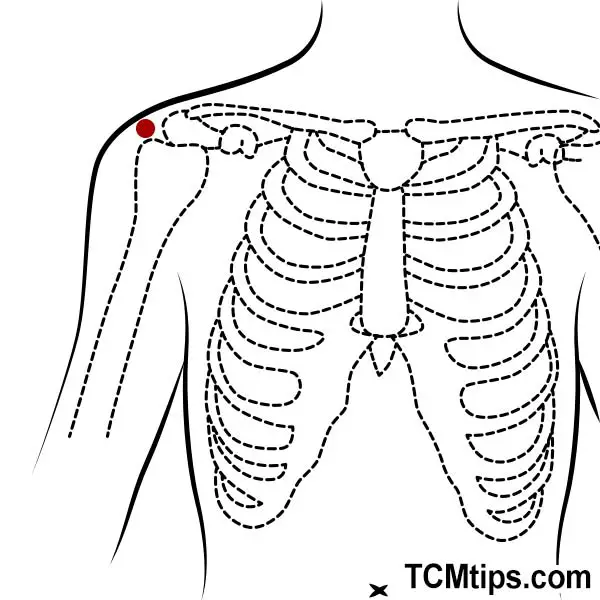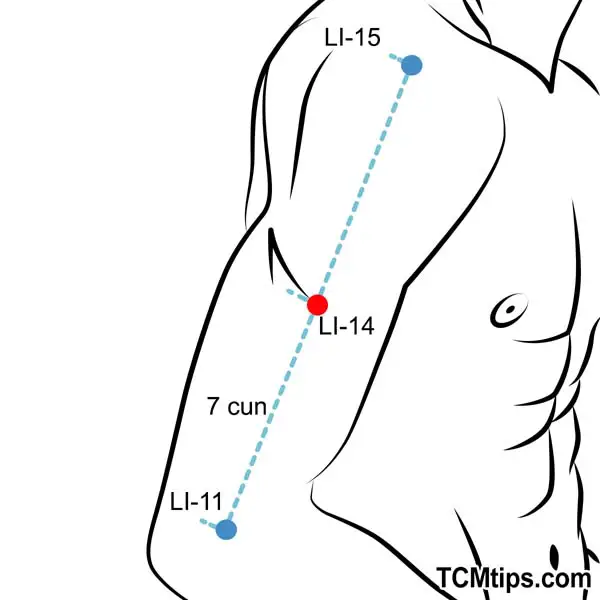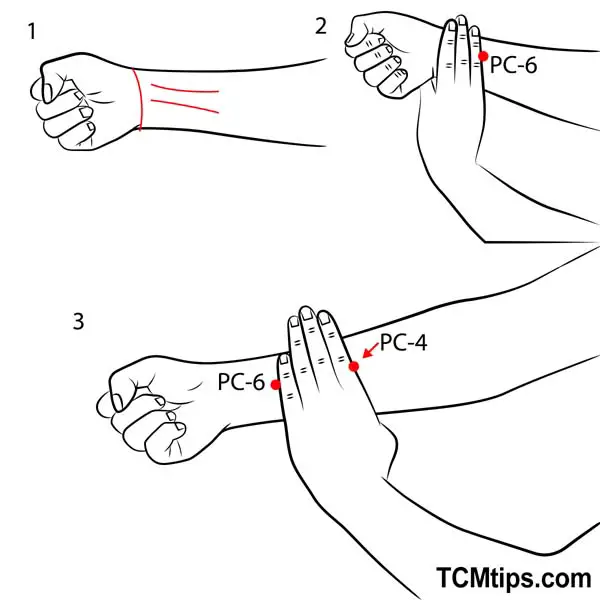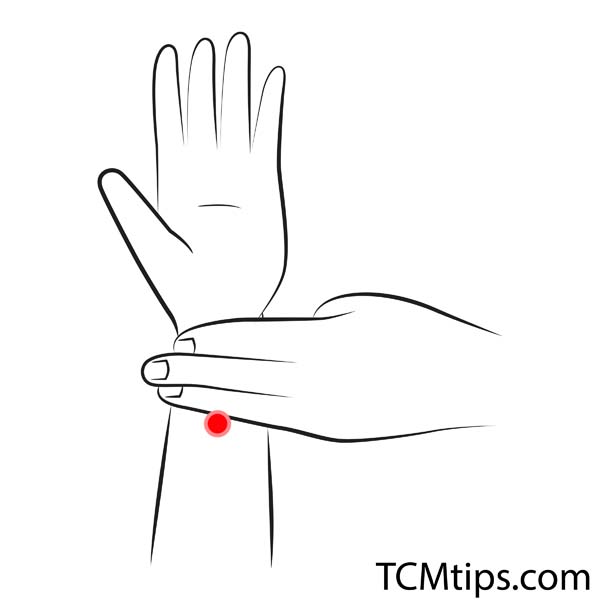Damage to the nerves lying outside of the brain and spinal cord causes peripheral neuropathy, also known as nerve pain. Peripheral neuropathy can manifest as something as slight as tingling or as severe pain throughout the body. While there are many different forms of treatment for this condition, we are going to discuss the acupressure points for shoulder and arm nerve pain and how to use them for relief.
Symptoms Of Nerve-Related Shoulder Pain And Arm Pain
Not all pain signals are symptoms of nerve pain – especially when the source of your pain is in your arm or your shoulder. These areas of the body are constantly in motion and support many of our daily movements and functions, leaving them vulnerable to many different health conditions. Even if you are experiencing pain in these areas, it may be muscle pain or other forms of inflammation.
However, if you are experiencing any of these symptoms, your pain may be nerve-related:
- Pain that arises without a cause (spontaneous pain)
- Pain that is shooting, burning, or stabbing
- Evoked pain, or pain that is triggered by occurrences that should, otherwise, be painless – brushing your hair, raising your arm, etc.
- Sensitivity to touch
- Problems with sleeping and resting
- Sensations of tingling or “pins and needles”
- Experiencing a lack of coordination
- Decreased range of motion during special and daily activities
Can Pressure Points Help Nerve Pain?

There are many studies that demonstrate evidence related to the effectiveness of acupressure for pain management. As with many chronic medical conditions, pain is an area of increased interest regarding the practice and effects of acupressure. The best thing about acupressure treatment is that it is generally a very safe and effective treatment.
Too much pain or pressure on nerves can lead to crippling conditions like a stiff neck or frozen shoulder – which have the ability to greatly affect your daily life. Other effective arm and shoulder pain treatment home remedies, such as a warm compress, stretching exercises, and over-the-counter pain relievers, can be combined with acupressure for both chronic and acute arm and shoulder pain.
Even electric acupuncture can be combined with these treatments. For example, electric acupuncture speeds up the recovery of the radial nerve, which runs down the back of the arm from the armpit to the hand.
What Are The Acupressure Points For Shoulder And Arm Nerve Pain?
Finding the best locations throughout your body to practice self-administered acupressure for a pinched nerve in shoulder or arm areas can feel challenging and confusing at first. As always, with acupressure, it is important to apply deep pressure to the area (as long as there is no pain) and to move with repetitive motions. When practicing, it is usually up to each individual if they prefer using a circular motion or in an up-and-down motion.
Acupressure Point for For Radial Nerve Palsy
Acupoint: LI-15 (Other Names: Large Intestine-15/Jian Yu/Shoulder Bone)

This point is in the depression occurring at the anterior border of the acromioclavicular joint when the arm is fully abducted. In short, to find this point, you should raise your arm away from your body. Use your finger to find the depression where your shoulder meets the top of your arm. While this point benefits the shoulder joint and relieves discomfort, it is also useful for detoxifying the lower intestine and is one of the important acupressure points for hives.
Acupoint: LI-14 (Other Names: Large Intestine-14/Bi Nao/Upper Arm)

Another one of the most effective acupressure points for arm and shoulder tension is the LI-14 pressure point. In addition to helping alleviate shoulder pain and neck pain, the LI-14 pressure point also aids with diseases of the eyes, including burning, pain, heaviness, swelling, decreasing vision, redness, photophobia, and noticing differences between colors. To find this pressure point, start at the upper arm, on the radial side, and you can find it 7 cun above LI-11 at the insertion of the deltoid muscle.

Acupoint: SI-5 (Other Names: Small Intestine-5/Yang Gu/Yang Valley)

The SI-5 pressure point helps to reduce swelling while clearing heat and the meridian. The SI-5 can be found on the ulnar side of the wrist, between the ulna’s styloid process and the triquetral bone, in the depression. Exhale for 3 seconds and press, then inhale for 3 seconds and release pressure to stimulate the acupoint. In addition to assisting with arm and shoulder pain, this is also one of the acupressure points for arthritis in fingers.
Acupressure Points For Median Nerve Palsy
Acupoint: PC-3 (Other Names: Pericardium-3/Qu Ze/Marsh at the Crook)

The PC–3 acupressure point is located on the arm, on the ulnar side of the biceps brachii tendon, at the transverse cubital crease. While this pressure point helps to alleviate nerve pain in the neck and shoulder, it also helps with many other ailments. You can use the PC-3 as one of the acupressure points for heart palpitations, as well as anxiety and panic attacks.
Acupoint: PC-4 (Other Names: Pericardium-4/Xi Men/Xi-Cleft Gate)

The tendons of the palmaris longus and flexor carpi radialis converge 5 cun above the wrist crease is where you will find the PC-4 acupoint. This pressure point is one of the acupressure points for emotional release and also helps with heart palpitations, in addition to releasing arm and shoulder pain.
Acupoint: PC-6 (Other Names: Pericardium-6/Nei Guan/Inner Pass)

You’ll find it by facing your palm upwards and placing three fingers on your arm from the wrist crease. The point between the two tendons where the index finger is resting is PC-6. In addition to being one of the acupressure points for vertigo, the PC-6 point helps to treat nausea and anxiety.

Try our Anti-Aging Gua Sha Tool designed to bring out your skin’s natural glow.
Best Gua Sha Product- Anti-Aging: The tool is designed to target 11 specific aging signs such as wrinkles and sagging skin. By following the 7-step routine, users can improve skin firmness and reduce fine lines naturally.
- Enhances Skincare Routine: It works effectively with serums and lotions, boosting absorption and efficacy of skincare products.
- Visible Skin Improvement: Users can expect a smoother complexion, reduced puffiness, and a more youthful appearance.
 P. Sze
P. Sze 
















